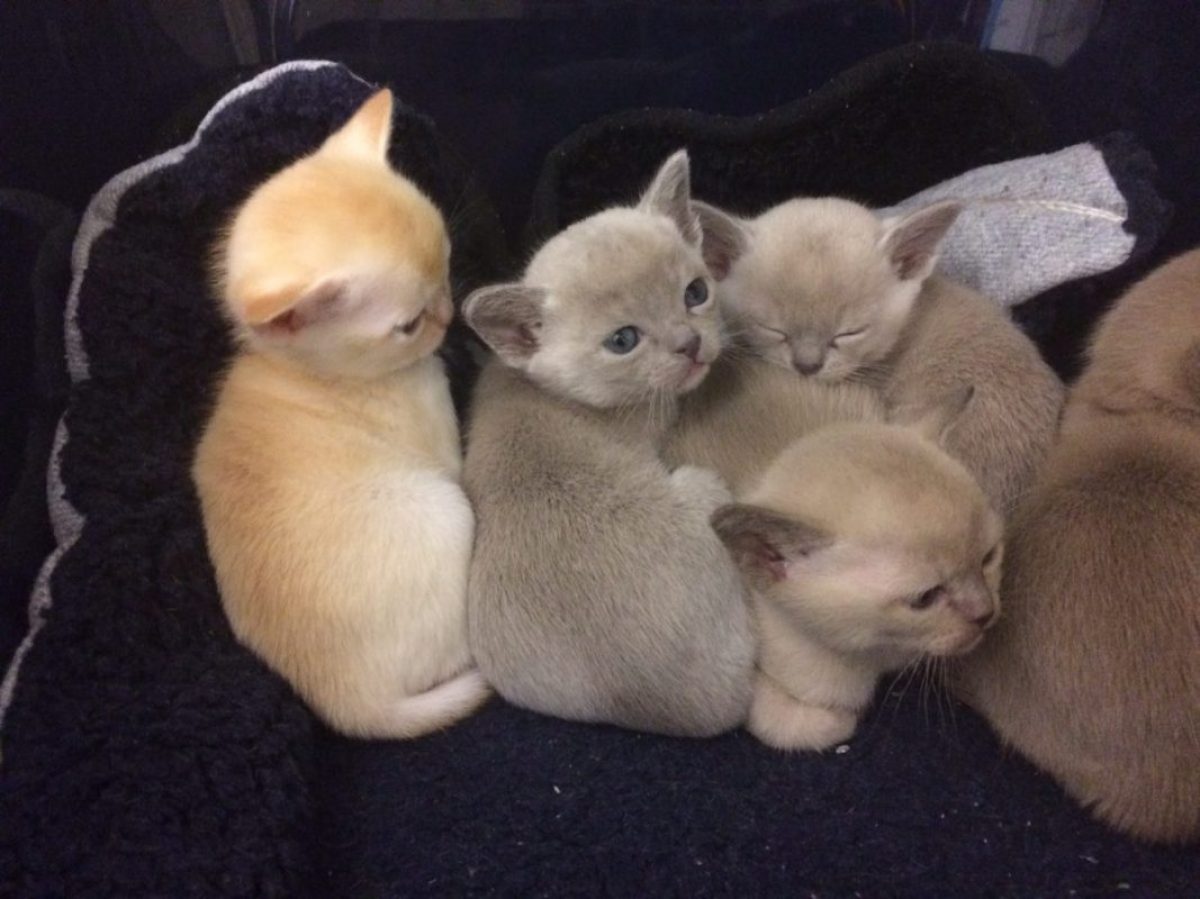
Domestic cats descend from a wild ancestor (probably either Felis silvestris or Felis lybica) a mackerel tabby patterned animal. The result is that all domestic cats will exhibit an underlying genetic tabby pattern. Diversity occurs because the challenge of change is always alluring.
All cats have 19 pairs of chromosomes upon which there are many thousands of genes that govern the eventual shape, size, sex, colour, pattern and hair length of each individual animal.
Over generations, a number of mutations have occurred and selective breeding has been used to isolate and produce the various pedigree breeds we see today. The mapping of the feline genome provides us with understandings about how genes can control coat, colour and pattern in cats, along with other genes that control body size, shape and conformation. Now that we know specific genes exist we can better control our cat diseases and structural abnormalities. But in the diversity stakes not all selections provide us with clear sailing.
Recessive genes can give us; kinked tails, squints, malocclusions, haemophilia (dentofacial deviation), flat chested kitten syndrome, cryptorchidism (no testes descended) and monorchidism (only one testicle in the scrotum). And if that is not tricky enough for you then we have mutations.
Mutation involves a process breakdown during cell division, commonly as a result of radiation or chemical exposures. The result is a variation, or mutation, within the DNA that leads to cats exhibiting changed characteristics. Mutation has given rise to the various coat colours and patterns commonly seen in our cats today but it also has some downside.
Recessive genes are both undesirable and difficult to eliminate. Usually, they will only express when they meet up with an identical partner in a particular mating. To defend against the risk of recessive genes and mutation bringing about unwanted affects, DNA tests are available and help us make sound breeding choices.
DNA tests are easy to acquire, relatively low cost, so cat breeders can easily contemplate outcrossing programs. Of course there remains the challenge of stock defects and confirmation improvements in any breeding program but at least you have some tools to help you align with the breed standard. Here at Starkatz we regularly check and review our breeding program in order to improve upon our established quality outcomes and with a little bit of outcrossing magic to bolster the well-being of our Burmese friends.
We can recommend testing at:
Langford Vets Diagnostic Laboratories
UC Davis Veterinary Genetics Laboratory

You must be logged in to post a comment.